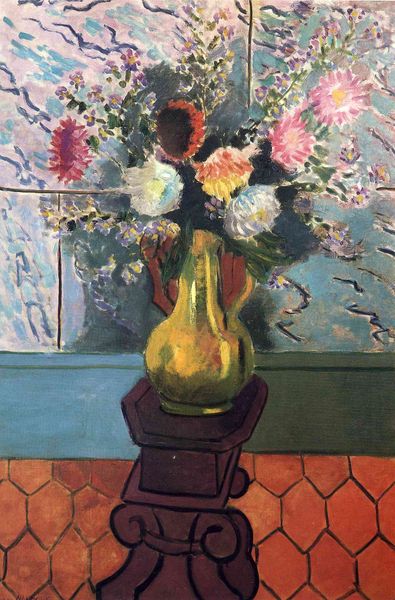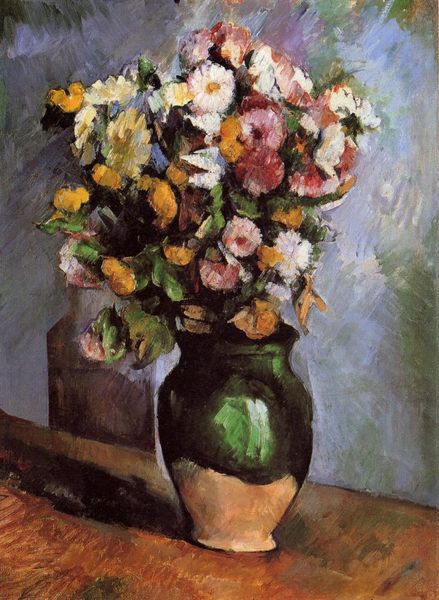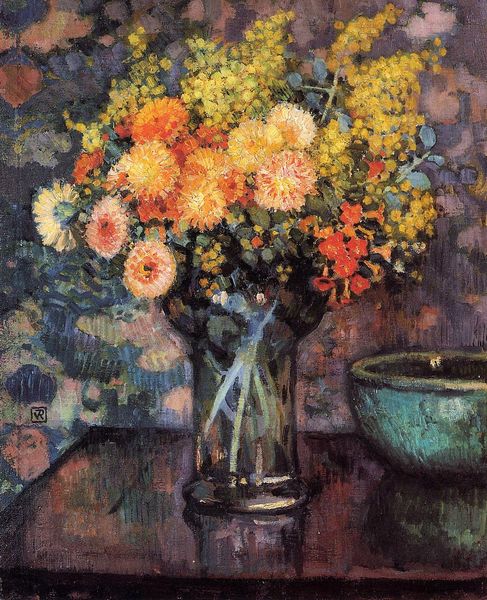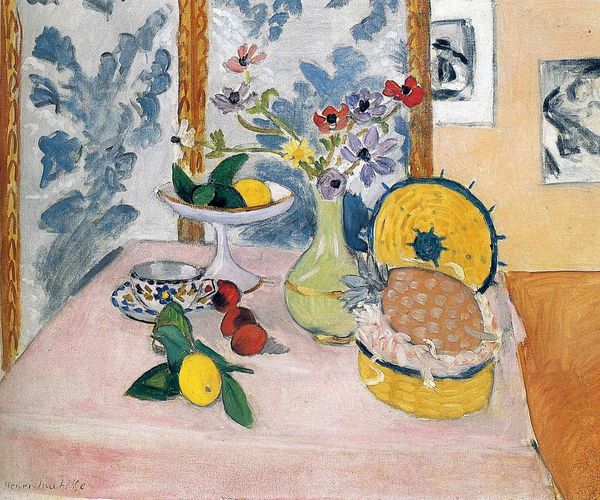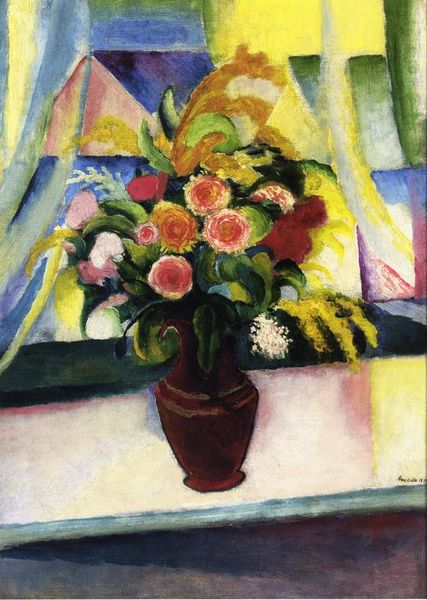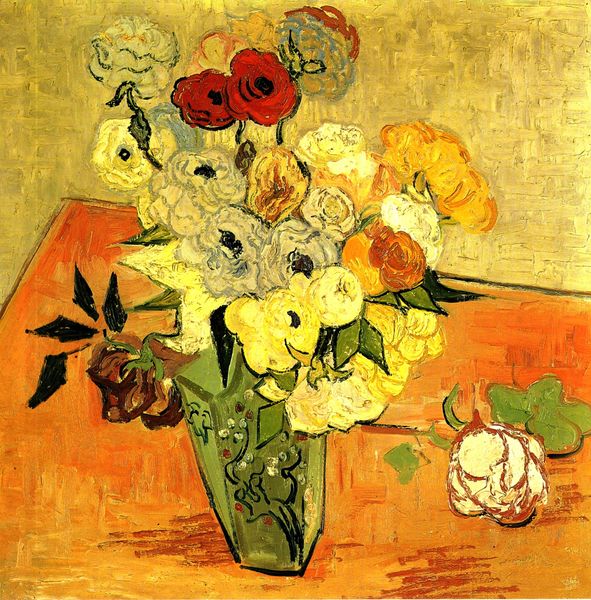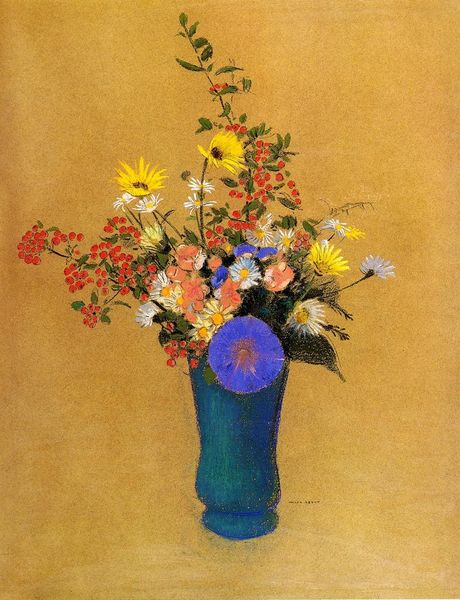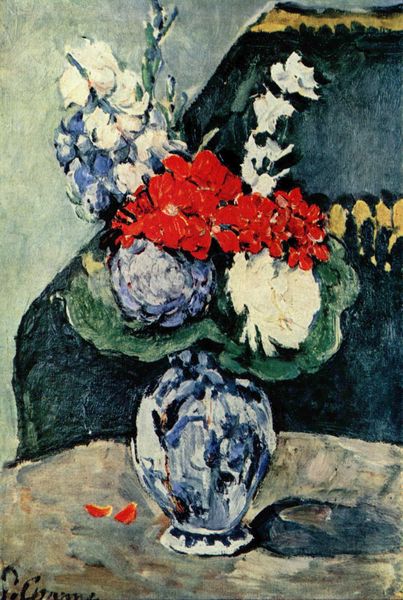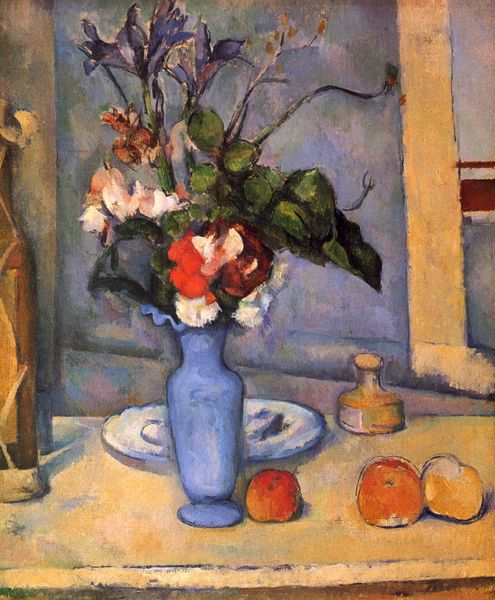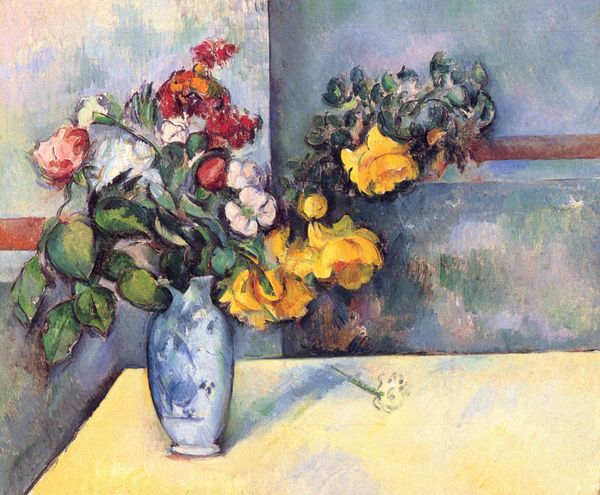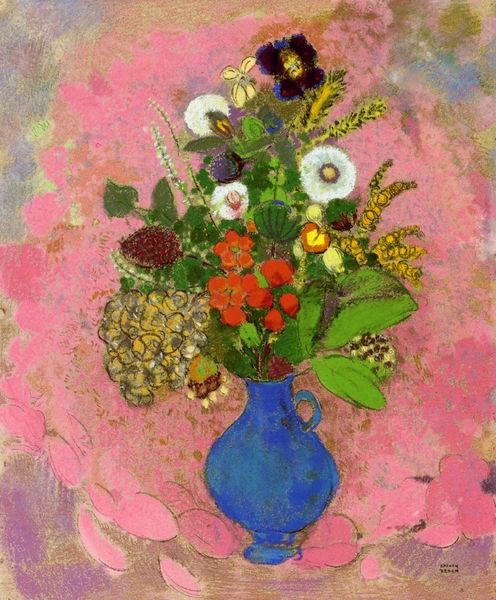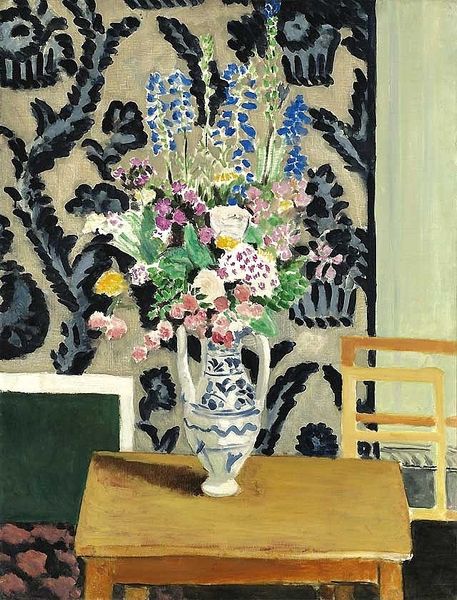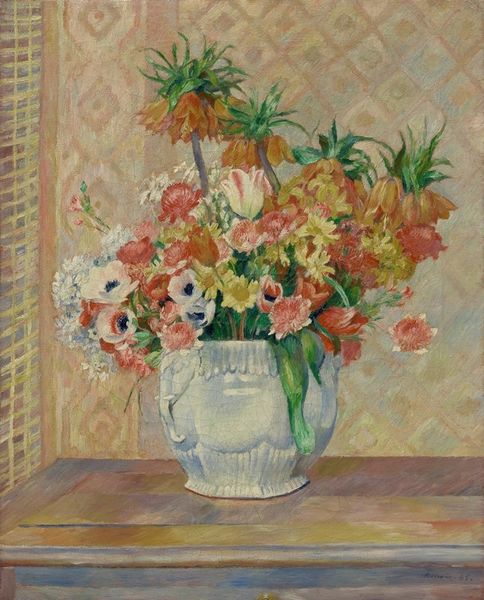
Copyright: Public domain US
Here is an analysis of Henri Matisse's painting, Daisies. The painting immediately strikes us with its vibrant yet calming composition. Matisse uses simplified forms and bold colors to capture the essence of a floral arrangement set against an open window. The vase of daisies, rendered in various shades of purple, pink, red and white, dominates the foreground, injecting life and energy into the scene. Notice how Matisse plays with perspective and depth, flattening the space to emphasize the surface of the canvas. This deliberate distortion challenges traditional representational techniques. The flat planes of color that make up the background, the cool blue of the sky, and the contrasting green of the window frame, create a dynamic tension. The window frame acts as a structural boundary, framing both the flowers and the external world beyond. This flattening of space and the use of bold color are quintessential elements of Matisse's modernist approach. Here, Matisse isn’t just depicting a bouquet of flowers. He’s inviting us to reconsider how we perceive space, form, and the very act of seeing.
Comments
No comments
Be the first to comment and join the conversation on the ultimate creative platform.
